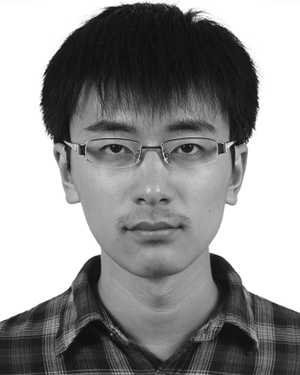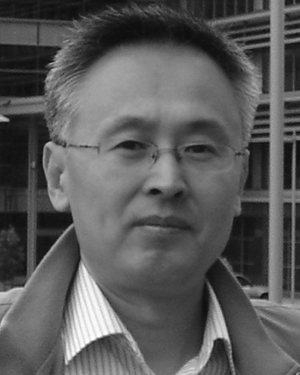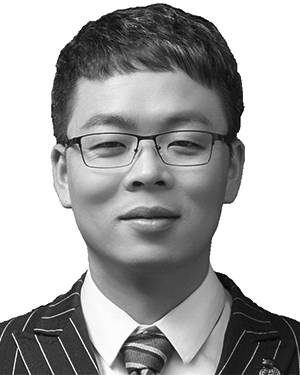Chang-chun Bao (M’98–SM’13) received the B.S.
degree in telecommunication engineering from Chang Chun Institute of Posts and Telecommunications, the M.S. and Ph.D.
degrees in communication and electronic system from JiLin University of Technology in 1987, 1992, and 1995,
respectively.
From December 1995 to November 1997, he was a Postdoctoral Research Fellow and an Associate Professor with the
School of Communication Engineering, Xidian University. He joined Beijing University of Technology as an Associate
Professor in November 1997, and was promoted to a Professor from July 1999 in the School of Electronic Information and
Control Engineering. From July to September 1998, he was a Senior Researcher with the Digital System Technology Lab,
Radio Products Research Group, Land Mobile Products Sector Motorola, Florida, USA. From March to August 2004, he was a
Visiting Professor with the University of Wollongong. From January to February 2014, he was a Senior Visiting Fellow
with Victoria University of Wellington. His research interests include speech and audio signal processing, speech
coding, speech enhancement, speech transcoding, audio coding, audio enhancement, bandwidth extending for speech and
audio signals, and 3-D audio signal processing. He has authored or coauthored the book Principles of Digital
Speech Coding (Xian, China: Xidian University Press, 2007). He is the author or coauthor of more than 290
papers in journals and conferences and holds nine patents. He was an Associate Editor for the Journal on
Communications, and currently an Editor for Signal Processing and Journal of Data
Acquisition and Processing.
Dr. Bao is a Board and Senior Member of Chinese Institute of Electronics (CIE), a Board Member of the Acoustical
Society of China, a Board Member of Signal Processing Academy of CIE, a Senior Member of IEEE Signal Processing
Society, a member of International Speech Communication Association, Chair of APSIPA SLA TC (2015–2016), and
Candidate Chair of National Conference on Man–Machine Speech Communication-Standing Committee in China.
Chang-chun Bao (M’98–SM’13) received the B.S.
degree in telecommunication engineering from Chang Chun Institute of Posts and Telecommunications, the M.S. and Ph.D.
degrees in communication and electronic system from JiLin University of Technology in 1987, 1992, and 1995,
respectively.
From December 1995 to November 1997, he was a Postdoctoral Research Fellow and an Associate Professor with the
School of Communication Engineering, Xidian University. He joined Beijing University of Technology as an Associate
Professor in November 1997, and was promoted to a Professor from July 1999 in the School of Electronic Information and
Control Engineering. From July to September 1998, he was a Senior Researcher with the Digital System Technology Lab,
Radio Products Research Group, Land Mobile Products Sector Motorola, Florida, USA. From March to August 2004, he was a
Visiting Professor with the University of Wollongong. From January to February 2014, he was a Senior Visiting Fellow
with Victoria University of Wellington. His research interests include speech and audio signal processing, speech
coding, speech enhancement, speech transcoding, audio coding, audio enhancement, bandwidth extending for speech and
audio signals, and 3-D audio signal processing. He has authored or coauthored the book Principles of Digital
Speech Coding (Xian, China: Xidian University Press, 2007). He is the author or coauthor of more than 290
papers in journals and conferences and holds nine patents. He was an Associate Editor for the Journal on
Communications, and currently an Editor for Signal Processing and Journal of Data
Acquisition and Processing.
Dr. Bao is a Board and Senior Member of Chinese Institute of Electronics (CIE), a Board Member of the Acoustical
Society of China, a Board Member of Signal Processing Academy of CIE, a Senior Member of IEEE Signal Processing
Society, a member of International Speech Communication Association, Chair of APSIPA SLA TC (2015–2016), and
Candidate Chair of National Conference on Man–Machine Speech Communication-Standing Committee in China.View more 



